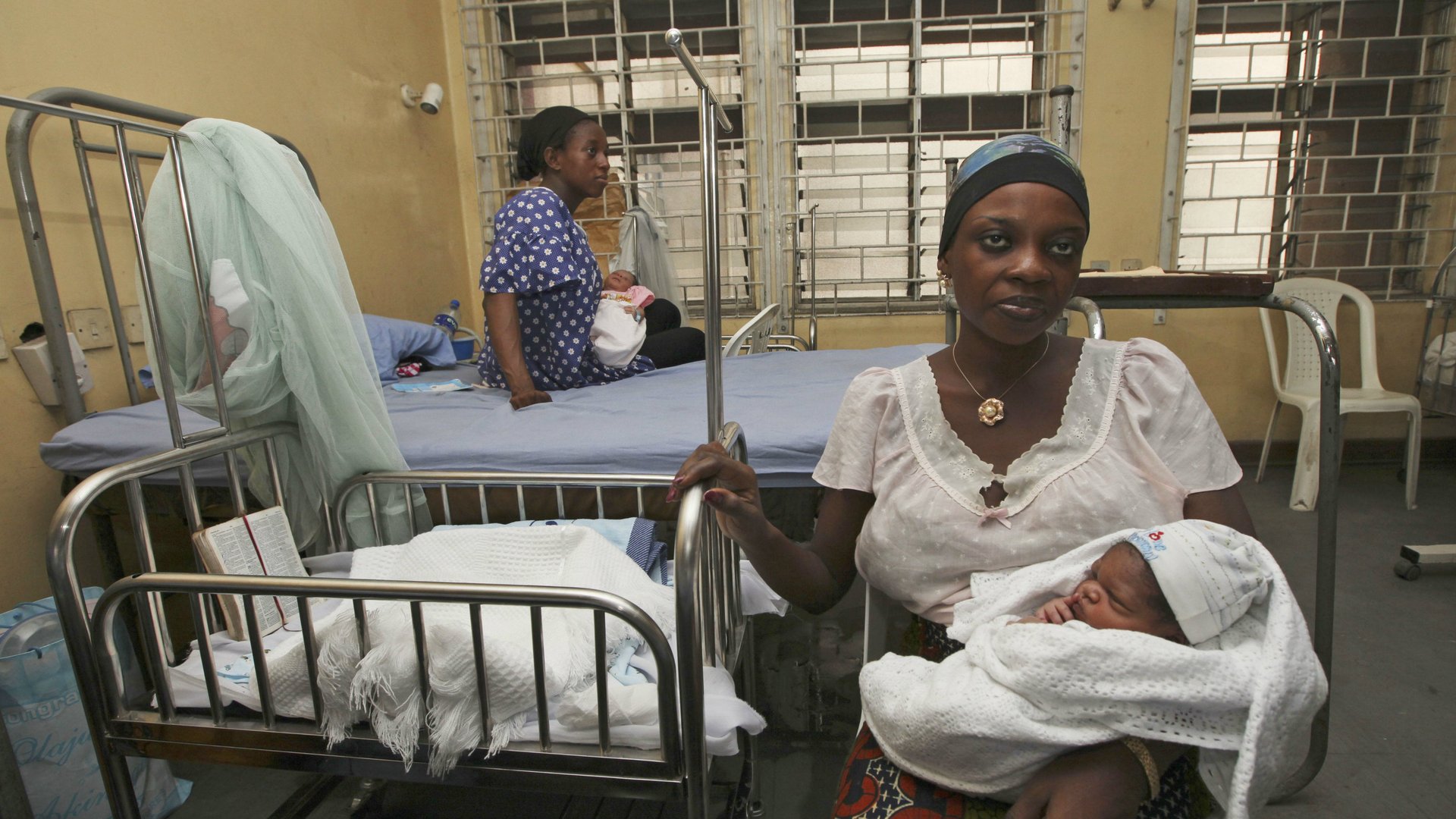How mobile technology helps reduce maternal mortality during childbirth in West Africa
Maternal mortality rates in West Africa are among the highest in the world. One in every 30 Nigerian mothers die in childbirth compared with one in every 30,000 in Sweden.


Maternal mortality rates in West Africa are among the highest in the world. One in every 30 Nigerian mothers die in childbirth compared with one in every 30,000 in Sweden.
This is still much better than it used to be. In Sierra Leone in the early 1990s, more than 2,300 women were dying for every 100,000 babies that were born alive. In Nigeria, 1,100 women were suffering the same fate. The situation in both countries has improved dramatically in the past 25 years. Sierra Leone has more than halved the number of maternal deaths to 1,100 for every 100,000 births, as has Nigeria – where the rate is 576 women for every 100,000 births.
But this is still way out of kilt with developed countries. In Sweden, there are four deaths for every 100,000 births. In the US, there are 28 for every 100,000 births.
Since 1990, maternal deaths worldwide have dropped by 45%.
But the drop has been marginal in most West African countries. Several attempts have been made to reduce the rate in the region through programmes such as the Safe Motherhood Initiative – but there has been limited success. Not all cases of maternal mortality can be prevented, but in most – especially in poorer countries–many women are still dying unnecessarily.
Little access to skilled care during labour
One of the explanations for the high maternal mortality is that very few women in the region give birth under skilled care. Less than 60% of women deliver their babies with the help of a skilled healthcare professional. This decision by most mothers-to-be is due to old customs, a lack of education, and poverty.
The next problem is in getting to a hospital and getting access to skilled healthcare personnel such as doctors or midwives. Much of this is as a result of transportation issues, too few doctors and midwives, and not enough appropriate centres. Research shows that only 36% of Nigerian women deliver under skilled care. The road networks and public transport systems are still sub-optimal in several parts of West Africa, including Nigeria.
Once women get to a hospital or get the attention of the doctor or the midwife, they face another set of problems–getting appropriate healthcare at delivery. This can be due to unreliable electricity supply, unavailability of blood and an inability to pay hospital fees.
There are other contributing factors in Nigeria, a country of 170 million people. These range from a lack of political will to a bureaucratic civil service, the unavailability of raw data and a three-tiered health care system–federal, state and local government–all of which are independent of each other.
Without accurate data, planning is ad-hoc at best. The disjointed healthcare system means that primary health care belongs to the local governments and is not adequately linked to secondary and state-controlled health care.
The lack of a properly functional health insurance system (particularly for the less privileged), which leads to unaffordable health care for the majority of the population, also has a role to play. Although there are ongoing efforts to improve this, there is not yet a solution.
No quick-fix solution
Innovation is key. Simple technology-based solutions should be used and expanded.
In Nigeria there are several initiatives that have provided some results.
- a commendable midwife service scheme which posts newly qualified midwives to rural areas for one year;
- dedicated mother and child hospitals that are run autonomously;
- free care for mothers and their newborns;
- tracking pregnant women in remote communities using mobile phones;
- a programme where unskilled traditional health workers are taught new skills and rewarded for referring pregnant women who contact them for delivery or other care; and
- an initiative to get accurate data. Set up in a few states (Ondo State in the South West being the pioneer), this involves the compiling of a confidential maternal death report that encourages the reporting of any maternal death in the state with a no-blame, no-shame caveat.
These strategies will not work in all parts of West Africa. Most areas are very poor and political will is not sufficiently sophisticated to realise how saving women’s lives during pregnancy is economically sound and saves costs in the long run. It is also not thought to be economically feasible to offer health care to all pregnant women free of charge.
But solutions can be adapted for different environments. As shown in Nigeria,
Holding people accountable is key
Each West African country needs to be studied to establish how access problems can be solved on a district-by-district basis.
Public private partnerships where private hospitals help train doctors, midwives and community health workers to take over the delivery of a fixed number of low-risk patients at lower rates than private hospitals, would also help reduce the access problem.
Infrastructural problems would need to be addressed individually through increased advocacy.
Whichever strategies are adopted, the most important overall tool will be the ongoing monitoring of various schemes. This is one of the key reasons many interventions fail. Monitoring and evaluation tools should be built into every new scheme identifying responsible individuals and units. The process should be tied to the performance indices of all medical directors, commissioners and ministers of health and local government chairmen.
With a mixture of these activities and monitoring tools, maternal mortality in West Africa will improve significantly. The problems and the possible solutions are all known but putting them into action and monitoring them have been less successful. Once this hurdle is overcome, West Africa will see the results.
Bosede Afolabi is associate professor of obstetrics and g ynaecology at University of Lagos.